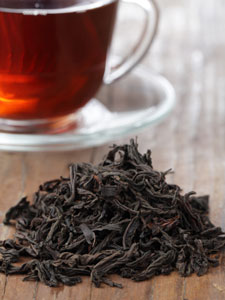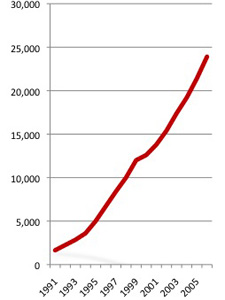Tea Roundtable: State of the Industry




This past week I had the privilege of spending some time with the owners and/or senior management of Adagio Teas, Dethlefsen & Balk, The Tea House, International Tea Importers, Rishi Teas, TeaSource, World Tea Expo and World Tea News. Here are a few of the more interesting topics that were discussed and some of the insights shared:
Far too many under-educated retailers are selling poor quality tea to unsuspecting customers. The quality of the average tea (even loose tea) sold in the US is unfortunately low to begin with. Add quality control problems (freshness, inconsistent flavoring, incorrect packaging and improper brewing techniques) and the picture becomes bleaker still. For the Specialty Tea Industry to take proper advantage of all of the positive press on tea, we're going to need to give the customer better tea, better education, and a more consistently positive experience.
The problem isn't one of communication but substance. Someone at the table proposed a "National Tea Campaign" akin to those staged by the beef, pork and dairy industries in recent years. The truth is that tea is already getting a TON of positive press. Ask 100 Americans if tea is good for you, and nearly everyone will strongly agree. Ask 100 Americans if they like hot tea and the response will be much more mediocre. Again, referring back to the first point, the problem is not endemic to tea itself but to what is being served to the consuming public.
Social Media may go a long way towards connecting consumers with quality tea. While most Americans have a hard time telling the difference between high and low quality unflavored teas, there are some out there who can. Sociologists and marketers have long observed how a small percentage of the population function as early adopters, influencers, trendsetters, and opinion makers. The proliferation of online ratings and group communication tools like Facebook, Foursquare, Twitter, etc. have the potential to provide the tea curious with the information needed to avoid mediocre brands and products, thereby ensuring a more positive experience and faster segment growth.
The future of the Specialty Tea market rests in the growth and expansion of trusted retailers. Unlike most other consumable products, premium tea is extremely difficult to mass-produce. In tea, every single day's crop is different. Larger tea companies blend many different lots to produce enough consistent product to last the year. The simple reality is that the type of tea, region and even the garden itself may have relatively little bearing on the quality. The name and source of the tea tell us VERY little about its quality. It's a little like wine. You can make some basic assumptions about a from Napa Valley, but there are $8 wines from Napa and $800 wines. Customers purchase wine based on brand far more than any other factor. The more the consumer learns about the complexity of tea (and the excellent quality possible), the more they will rely on trusted brands and retailers.
The last few years have been characterized by tremendous churn, and that trend will continue. Churn is the turnover of wholesalers and retailers as new companies enter the market while others close their doors. The interest in tea and the number of new entrants to the market are both very high, but so is the failure rate. It's scary. And painful. EFFICIENTLY sourcing a couple hundred high quality, fresh teas (plus a wide range of accessories), and then re-selling those in an engaging environment (in-store or online) is a lot more complicated and expensive than most people realize. (More on this in Measuring profitability in a tea store.)
I definitely didn't sense pessimism among the group... we all remain very confident that premium tea consumption will continue to grow in the US. Our futures are bright. At the same time, many of us have been expecting an inflection point now for several years. We've all assumed that at some point the right mix of positive press, scientific research, consumer interest, and availability of quality product will combine to dramatically change the growth curve of the industry for the better. We're all looking for that "hockey-stick" point in the graph that coffee saw when the number of coffee shops in the US grew from 1,650 in 1991 to 25,000 by 2006. Most are not expecting 20,000 tea shops to spring up... ever... but at some point we believe that consumption will begin accelerating rapidly.
In the end, we all need to do a better job of delivering consistent quality in both experience and product in order to overcome the American public's perception that tea is not worth the hassle. The inflection point may be just over that next hill...
Adagio Teas
Twitter: @AdagioRetail
